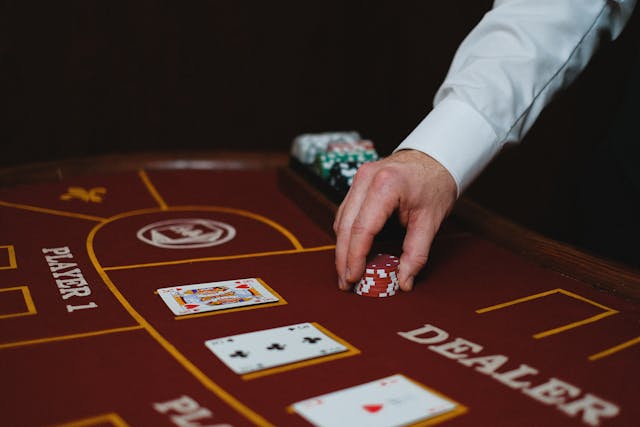When Live Poker Changes: How High-Stakes VIP Tournaments Shape the Game
In live poker, the atmosphere shifts the moment the stakes rise. A $100 home game feels worlds apart from a $1,000,000 buy-in event. Every decision, every look, carries weight. Players sit straighter, hands steady or trembling slightly. The difference is not only in numbers but in energy, precision, and psychology. The world of high-stakes poker has its own rhythm and unwritten rules, setting it far from everyday tables or casual social casino experiences.
The World of VIP Tournaments
Events like Triton Million or The Big One for One Drop redefine what poker can be. The buy-ins range from $100,000 to over a million dollars. These tournaments attract elite professionals, wealthy entrepreneurs, and adventurous amateurs chasing prestige. The 2019 Triton Million in London had a £1,050,000 buy-in and drew 54 players. That’s over £54 million on the line, not counting side bets or swaps.
Unlike open tournaments, these events often mix invitation-only fields. You’ll see business moguls seated next to Daniel Negreanu or Justin Bonomo. Every table becomes a psychological experiment. One wrong read can cost more than a luxury car. Yet behind the glamour lies intense preparation: studying tendencies, adjusting to structure speed, and managing emotional tilt.
How Table Dynamics Shift
The dynamic at a high-stakes table is almost theatrical. Everyone watches everyone else. Silence feels heavier. Players know each other’s reputations, and image control becomes part of the strategy. A calm face might hide panic; an easy smile can mask calculation.
Here’s what typically changes when the stakes climb:
- Shorter fields, deeper study. With 40–60 players instead of hundreds, everyone knows everyone’s playbook. Each move is analyzed across previous hands and history.
- Stronger meta-game. Regulars form overlapping circles. They swap percentages, discuss strategy between events, and even build alliances for information exchange.
- Different motivations. Some play for legacy, others for adrenaline, a few for social status. Money is the entry ticket, not always the goal.
In cash games, the atmosphere is looser. Players can rebuy, reset, or walk away. In tournaments, one mistake means elimination. That pressure builds a completely different rhythm.
Psychology Under Pressure
High-roller tournaments amplify emotion. It’s not uncommon for players to invest only part of the buy-in, selling pieces to backers or friends. The awareness of playing with others’ money adds a layer of psychological tension. A professional might hold 30% of their action, while the rest is split among investors.
Even the best-known players admit the toll. Negreanu once mentioned that many regulars in the high-roller scene show huge winnings on paper but far thinner profit margins after costs and swaps. That financial tightrope influences how people play — tighter ranges, controlled aggression, fewer hero calls.
Mindset management becomes crucial. Top players use meditation, physical training, or strict routines to handle long sessions under bright TV lights. The focus is not on surviving a hand but surviving the pressure of being watched by millions.
Comparing Cash Games and High Stakes
Cash games offer freedom. Blinds stay the same. Players can leave anytime. The skill lies in long-term consistency. But in high-stakes tournaments, the structure keeps pushing everyone forward. Blinds rise. Stacks shrink. Time is a factor.
Differences are sharp:
1. Risk perception. In cash games, risk is adjustable — you can reload. In tournaments, you get one life. Every chip lost brings you closer to the rail.
2. Strategy cycles. Cash players grind value. Tournament players balance ICM pressure, timing, and table image.
3. Social element. VIP events often include charity angles, exclusive venues, or broadcast coverage. Appearance and behavior matter as much as play.
Because of that, elite tournaments often feel like high-stakes theater where decisions echo far beyond the felt.
Real Numbers Behind the Glamour
The data paints the picture. The Big One for One Drop in 2012 had 48 players and a prize pool of $42.6 million. Antonio Esfandiari took home $18.3 million — still one of poker’s largest payouts. In contrast, the Irish Poker Open 2024, with a modest €1,150 buy-in, drew over 3,200 entries. The winner earned about €400,000. Two completely different worlds, both thrilling in their own way.
Triton Jeju 2024 featured 17 tournaments with buy-ins between $15,000 and $150,000, totaling 2,555 entries and over $100 million in combined prize pools. Even among professionals, that’s an intimidating figure.
The Human Side of High Stakes
Beneath the glamour, players deal with isolation, travel fatigue, and constant pressure to perform. Some thrive under it, treating poker like an extreme sport. Others burn out. That’s why mental game coaches, data analysts, and fitness trainers are now part of the entourage.
Behind each million-dollar pot is a mix of nerves and instinct. A small hesitation. A glance across the felt. Poker at this level stops being about cards — it becomes about people. And that’s where the true fascination of live high-stakes play lies.

